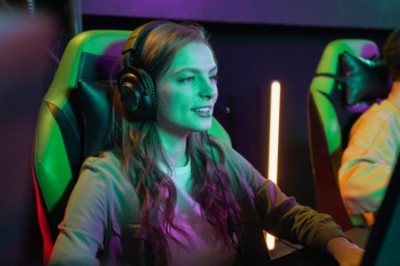views
Colored lighting has an emotional impact on our mood, has the power to entirely change how a room is seen and can produce unusual lighting effects. The most important thing is to get the dosage and colored light placement right; else, the wow effect will change into confusion or a headache. We explain how and from what sources to use colored light inside to create the desired effect.
What are we talking about?
Let's first go to the heart of the matter. Any artificial light, whether warm, neutral, or cold, can theoretically be referred to as a color light. The essential numbers are printed on the box of each light bulb and represent the chromaticity of the light source in Kelvin. Interior lighting "functions" differently than exterior lighting: warm yellowish light creates a cozier atmosphere, makes food look tasty, and makes individuals appear more attractive whereas cold light encourages focus and mercilessly exposes defects.
Both warm and cold light slightly alter the room's ability to reproduce colors, muting some hues and boosting others. Warm and cold light have fewer decorative options than light that is a certain color, though. We will discuss it. These sources can only be used as an additional ornamental option; they cannot be used as general lighting.
According to the experts from the EssayPay service, colored light has a greater impact on our mood than bright walls or colorful decorations. For instance, red light stimulates the senses, purple is beneficial for meditation, and orange is supposed to generate a sense of security due to its primitive relationship with alive fire. Green light is also thought to help relieve tension.
The main use of colored sources gradually and in doses, intense luminous elements in the interior are best avoided if possible, as an excess of colored light can feel strange and uncomfortable and confound biological rhythms. Let's explore the interior lighting options that can be introduced painlessly.
Return of neon
Neon signs from the 1980s remind us of American motels, taverns, and nightclubs that were located next to the road. Neon signs and figures were once at the top of the fashion hit parade a few years ago, but they bored designers and even temporarily made the list of anti-trends before triumphantly returning to home interiors all over the world last year. Designers frequently blame such a sharp reversal on societal constraints and the fact that many people feel the need to elicit greater emotion from their living environment after switching to remote employment. The Instagram bloggers who regularly use neon lights to add fresh hues to their images are largely to thank for its recent surge in popularity.
Modern interior signs are typically made of flexible LED-neon - elastic cable that contains LEDs and has a gentle glow from the frosted surface.
For young eclectic interiors, neon light is an interesting decorative feature that makes it possible to quickly change the mood. One sign per room serves as the appropriate dosage in this instance.
It should be clear that this light is only decorative and serves no practical use. That is to say, a reading lamp will always be preferable to a neon sign.
LED miracles
LED lighting that is concealed is a less peculiar and more conventional choice. With it, you may play with color, highlight a certain area or emphasize an object, and even make the furniture appear to "float." You can light up the furniture's edges, nooks, steps, walls, floor, and ceiling. The most important thing is to stop in time, not all at once.
You may alter the color of the light yourself with some LED lights. It can serve as both a source of general and accent illumination. These lights, which are typically operated from a mobile device, give you a wide range of color options and make it simple to alter the mood of the space. Most significantly, when you decide that playing around with light today is enough, such lights can take the typical warm or neutral colors.
The riskiest alternative is to illuminate the entire space in a variety of colors, much like a nightclub. Although it is highly improbable, you might consider taking this step if you enjoy interior design experiments, believe in color therapy, and/or frequently host guests at your house. Even so, there must be a switchable option to switch from colorful lighting to standard general lighting.
A budget and relaxed alternative to LED lighting can be garlands, the decorative power of which should not be underestimated. Choose garlands in a single color to experiment with the color theme of the room; colorful garlands can wait until the New Year's festivities.
A simple trick with a lampshade
Using colored lampshades is a more delicate way to experiment with light color if neon signs and colored lights are too dramatic or stylistically unsuitable.
Lampshades softly change the color of the light rather than producing the effect of club lighting. Only local illumination is advised for fixtures with lampshades consisting of colorful paper, cloth, translucent stone, one-color colored glass, or stained paper. For instance, over the table where people are dining, in the play area, or in the corner with live plants. The most common supplementary lighting method used to create a comfortable or romantic chamber ambiance is the usage of colored lampshades.
It is best to avoid combining bulbs that produce white or cold light with lampshades that are warm in color, and the opposite applies to yellow lights with lampshades of a different warm hue. If not, a visual dissonance may be produced.
The biggest local trend this year is colored light. To keep the trend from turning into nonsense, use it as an element of decor, and don't forget well-designed general and functional lighting.
























Comments
0 comment